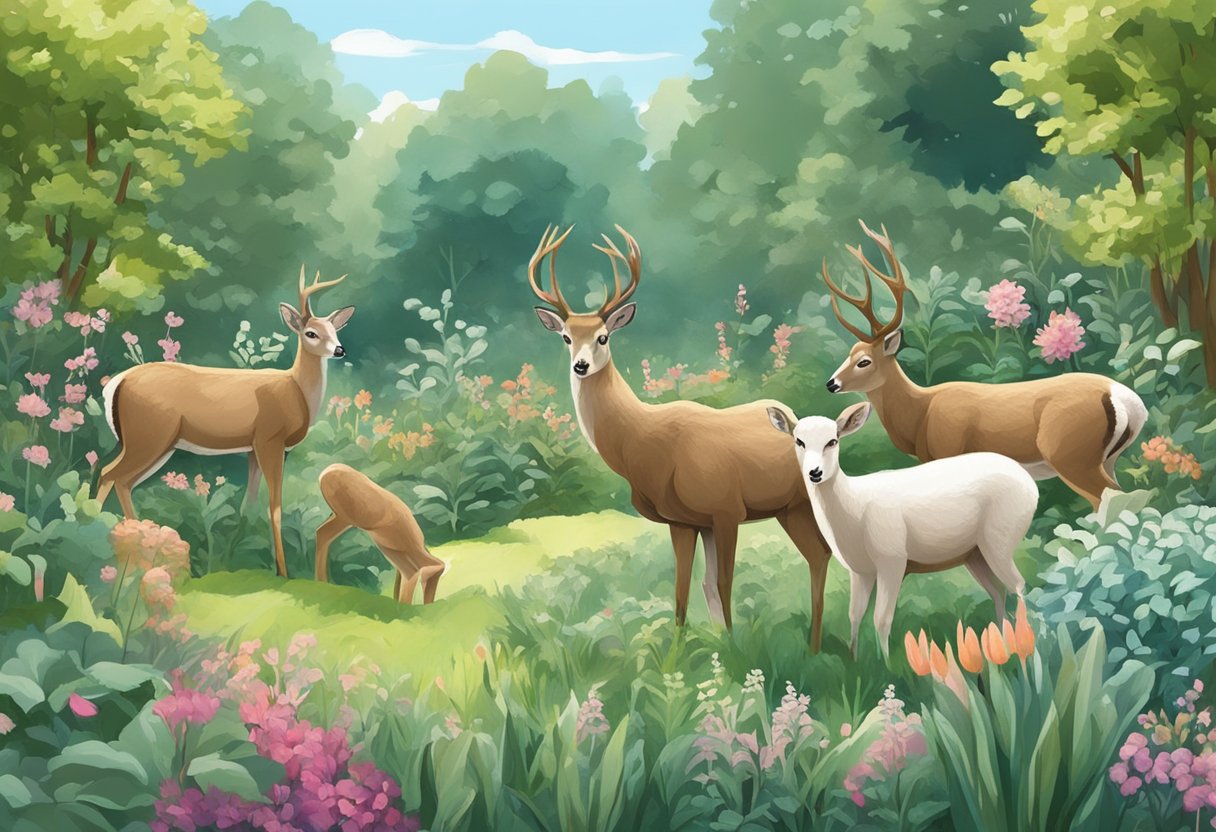Lamb ’s spike is a popular recurrent plant known for its voiced , velvety leaves and low maintenance requirements . However , one of its lesser - known qualities is its ability to repel deer . In area where cervid are a vulgar trouble for gardeners , lamb ’s earcan be a valuable summation to the landscape painting .
cervid - resistant plants are highly sought after by those who wish to protect their gardens from surf cervid . While no plant is totally deer - proof , lamb ’s auricle is one of the most effective deterrents . The texture and scent of the leaves are unappealing to deer , making it less likely that they will graze on nearby plants . to boot , lamb ’s ear is a dauntless industrial plant that can thrive in a variety of soil conditions and requires minimum watering , make it a practical option for many gardeners .
Stachys Byzantina , commonly get it on as lamb ’s pinna , is a versatile works that can be used in a variety of garden configurations . Its voiced , silver leaves provide a spectacular contrast to other plants and can add texture and interest to any landscape . Whether used as a ground cover , butt on plant , or accent , lamb ’s capitulum is a worthful addition to any garden .

Planting and Growing Lamb’s Ear
Lamb ’s ear ( Stachys byzantina ) is a sturdy and low - maintenance plant that can sum grain and interest to any garden . Here are some tip for institute and growing lamb ’s spike :
Ideal Conditions for Growth
Lamb ’s capitulum thrives in full sun to fond nuance and prefers well - drained soil . It is drouth - tolerant and can survive in a range of soil type , but it prefer soil that is slightly acidic to neutral . Lamb ’s ear can also grow in pots , but it is important to control that the potting mix is well - drained .
Propagation Techniques
Lamb ’s ear can be broadcast through seeds or division . semen should be sown in spring or summertime in well - drained soil and softly covered with soil . The filth should be kept dampish until the seminal fluid germinate , which can take up to two hebdomad . Division is best done in spring or strike when the plant is not actively produce . To disunite lamb ’s ear , carefully dig up the plant life and separate the thud into smaller sections . Replant the sections in well - run out filth and piss thoroughly .
Lamb ’s pinna also benefits from regular fertilization andmulching . A balanced fertilizer can be applied in springiness and summertime to encourage healthy ontogeny . Mulching can help to keep on moisture and suppress weeds .
Overall , lamb ’s ear is a various and attractive addition to any garden . With right planting and care , it can thrive in a variety show of conditions and provide year - round interest .

Lamb’s Ear Attributes and Care
Physical Characteristics and Aesthetic Value
Lamb ’s capitulum ( Stachys byzantina ) is a soft , perennial herbaceous plant that is aboriginal to Turkey and Armenia . It is a democratic leaf plant in the Lamiaceae house , known for its silvery , velvety leave that resemble the texture of a lamb ’s ear . The plant life produces regal peak on tall heyday stalks in the summertime , supply a pop of color to any landscape . Lamb ’s ear is an evergreen plant that is commonly used in stone garden , centripetal garden , and xeriscaping .
Maintenance and Disease Management
Lamb ’s ear is an average spreading plant that requires humbled alimony . It prefers juiceless to medium , well - drain ground and partial sun to full ghost . Lamb ’s ear is an strong-growing plant that can easily take over a garden if not prune on a regular basis . To prevent ascendant putrefaction and other diseases , it is important to keep off planting lamb ’s auricle in hapless soil or arena that are prone to waste .
Lamb ’s ear is generally pest and disease resistant , but it can be susceptible to insect and diseases such as cotton boll , betony , and sage . To prevent these issuance , it is important to hold skilful garden hygienics and to prune the industrial plant regularly . Lamb ’s spike is also a great deer - resistant plant , ca-ca it a democratic choice for gardens near fence cable or in sphere with high wildlife activeness .
In summary , lamb ’s ear is a beautiful and low-pitched maintenance herbaceous perennial that adds texture and color to any landscape . With proper care and disease management , it can thrive in zones 4 and higher and is a great improver to any sensational garden , container , or hill .